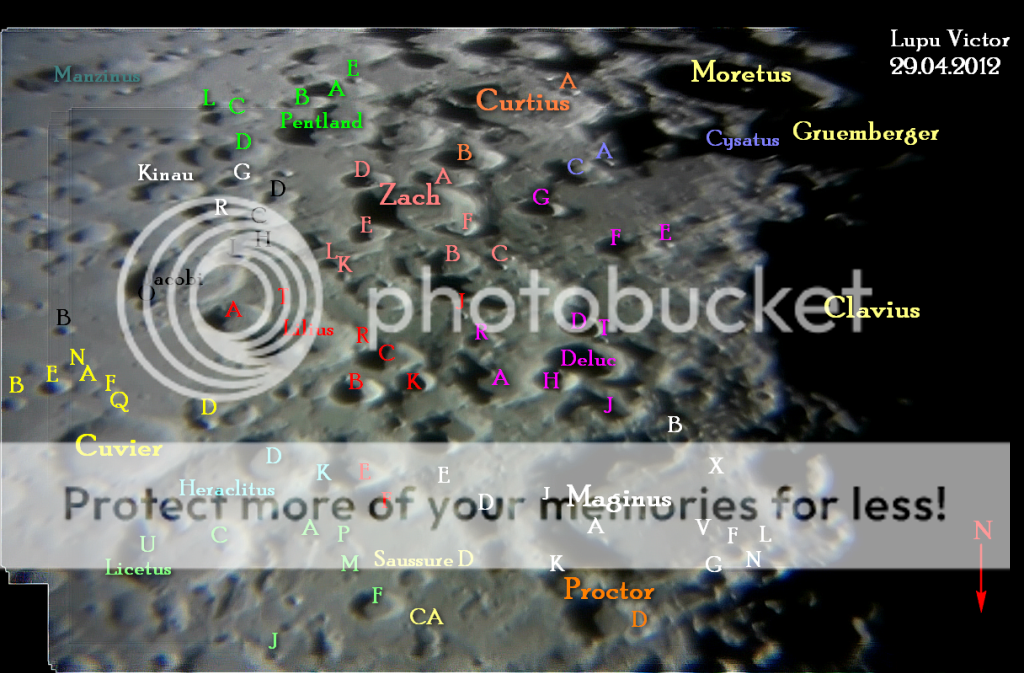Heraclitus and Licetus (90/75 km) are two stuck together craters, but they are more complex than you think. The shape can confuse you because these are some overlapping craters. From what I can tell, Heraclitus is the oldest of them. If you remove craters are overlapped over it, you will see that this is a circular crater affected by many small impacts. Over it, were held two impacts: one to the north that formed the crater Licetus, and one to the south, called Heraclitus D (52 km). Images are upside down for better observation.
Circular crater to the southeast of Heraclitus, the Cuvier (75 km), which is sticking to the edge of Heraclitus.
Image for orientation from 29 April, 2012..
|
Phase: 70.5% (0% = New, 100% = Full)
Distance: 399.221 km
Optics: Celestron C8-Newtonian telescope, 20mm Plossl, 2x barlow
Mount: CG5 (EQ5)
Camera: Sony CX130
Filter: no
Date: 10/03/2014
Location: Baia Mare, Romania
Processing: FastStone Image Viewer




 Saturday, October 25, 2014
Saturday, October 25, 2014
 Unknown
Unknown





 Posted in:
Posted in: 


0 comments:
Post a Comment